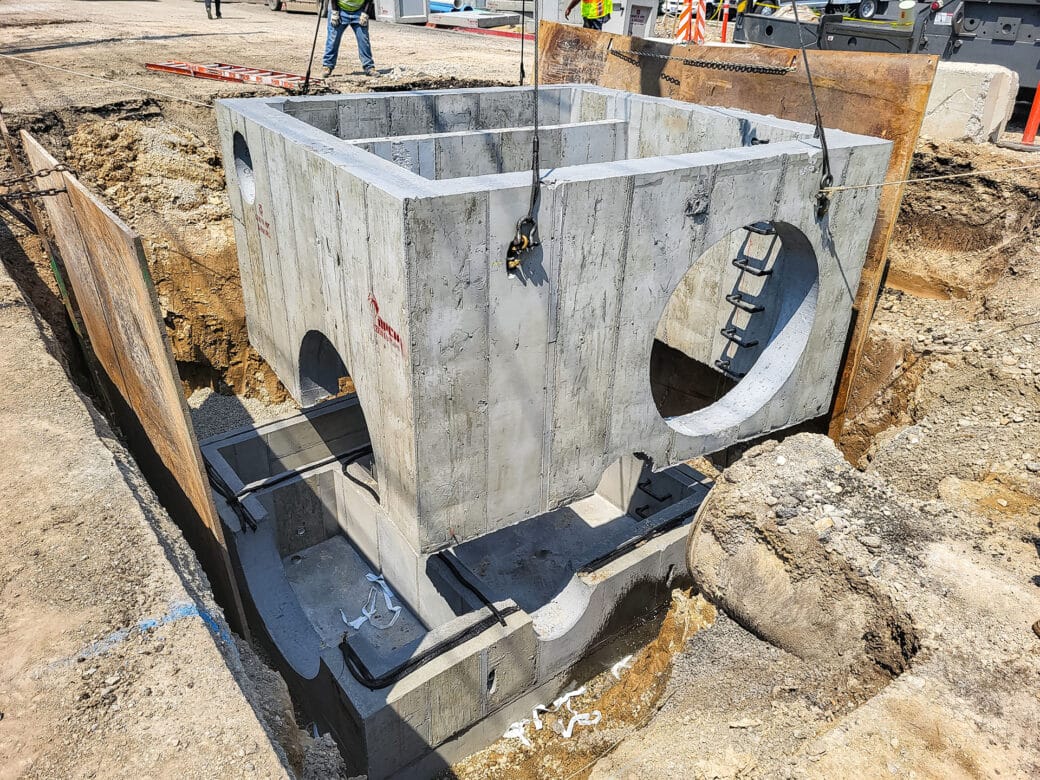The Essential Duty of Concrete Structure in Structural Honesty and Durability
When it comes to building a residential property, the structure is more vital than you could assume. Concrete structures provide unrivaled stamina and toughness, guaranteeing your framework can stand up to numerous ecological difficulties. Without a strong base, you risk potential issues like changing or fracturing, which can jeopardize safety and value. Understanding the subtleties of concrete structures could be the trick to maintaining your financial investment for several years to come. So, what should you consider following?
Comprehending the Significance of Concrete Foundations
Concrete foundations are vital to the overall security of any framework, as they give the important assistance required to withstand different loads and ecological problems. When you believe about building a home or a business space, the foundation is the initial point you must consider. It works as an obstacle versus moisture, securing your home from water damages. A well-placed concrete structure likewise protects against settling and moving, which can cause fractures in wall surfaces and floorings. You'll desire to assure that the structure is properly designed and enhanced, as this affects the longevity of your building. Furthermore, a solid structure can boost power effectiveness by decreasing air leaks. Bear in mind, disregarding the value of a concrete structure can result in expensive fixings down the line. So, spending in a high quality structure upfront is necessary for the stability and sturdiness of your structure.
Benefits of Concrete Structures for Structural Stability
While several factors add to a structure's structural integrity, concrete foundations use unparalleled toughness and toughness. You'll appreciate that concrete can endure extreme climate problems, resisting both wetness and temperature variations. This resilience indicates your framework is much less likely to experience cracking or shifting in time, which can jeopardize its safety.Additionally, concrete's fundamental weight supplies a strong base, protecting against movement during natural events like quakes or floodings. When you pick a concrete foundation, you're likewise choosing for low maintenance; unlike wood, it won't rot or attract insects, saving you money and time in repairs.Moreover, concrete's fire resistance supplies added safety, guaranteeing your framework can withstand high temperature levels without considerable damage. In general, spending in a concrete structure implies you're prioritizing the long-lasting stability and stability of your structure, making it a sensible option for any building task.
Common Types of Concrete Foundations
When it involves developing structures, comprehending the common sorts of concrete foundations can help you make educated options for your project. One of the most common kinds include slab-on-grade, crawl room, and full cellar foundations.A slab-on-grade foundation is an easy, economical option, where a thick concrete slab is poured straight on the ground. This type functions well in warm environments, as it reduces heat loss.Crawl room structures elevate the home a little above ground, allowing for air flow and access to pipes and electric systems. This design can aid protect against dampness issues.Full basement structures offer added living or storage space while giving exceptional structural support. They need more excavation and are commonly utilized in cooler climates to avoid frost heave.
Variables to Think About When Designing a Concrete Foundation

Finest Practices for Putting Up Concrete Foundations
When you're setting up a concrete structure, appropriate site preparation is vital to ensure security (West Coast General Engineering concrete foundation Rancho Cucamonga). You'll also require to recognize reinforcement techniques to improve toughness and durability. Finally, do not overlook the healing process, as it plays a fundamental duty in attaining a solid foundation
Site Prep Work Importance
It might appear straightforward, proper website preparation is essential for guaranteeing a solid and long lasting concrete foundation. Begin by clearing the location of any type of particles, greenery, or organic product that might compromise the structure's stability. Next off, examine the soil kind and compaction; you may need to excavate or add products to develop a steady base. Level the ground to guarantee also weight distribution and stay clear of clearing up problems later on. Mounting appropriate drainage systems is likewise necessary to protect against water buildup, which can damage the structure in time. Mark out the structure's measurements accurately to assist the pouring procedure. By adhering to these steps, you'll establish the stage for a successful concrete structure that stands the test of time.
Reinforcement Strategies Discussed
As soon as the site is appropriately prepared, the following action in assuring a sturdy concrete foundation involves carrying out effective support strategies. You should begin by using steel rebar, which provides tensile stamina and aids stop cracking. Lay the rebar in a grid pattern, making certain it rises utilizing spacers to keep proper protection. In addition, consider making use of cable mesh for added support, especially in areas subject to heavy tons. Don't neglect to tie the rebar intersections securely with cable. For larger foundations, fiber support can improve longevity, decreasing the risk of shrinkage fractures. Always follow neighborhood building regulations and guidelines to guarantee compliance. By using these support methods, you'll greatly improve your structure's stamina and long life, laying a strong foundation for your framework.
Healing Refine Essentials
To ensure your concrete structure cures appropriately, it is very important to maintain adequate moisture and temperature problems quickly after putting. Start by covering the surface area with a damp cloth or plastic bed linen to retain moisture. This keeps the concrete hydrated, protecting against cracks and guaranteeing stamina. You need to also keep track of the temperature; excellent healing conditions are between 50 ° F and 90 ° F. If it's too hot, haze the surface frequently to avoid quick dissipation. For chilly weather, consider making use of protecting blankets to keep heat. Go for a treating period of at least 7 days, as this is crucial for ideal strength advancement. By complying with these finest methods, you'll enhance your structure's durability and longevity, ensuring architectural integrity for several years ahead.
Maintenance of Concrete Structures for Longevity
To keep your concrete structure strong and enduring, routine inspections are essential. You ought to also guarantee reliable drainage services are in location to prevent water damages. If you find any kind of fractures, resolving them immediately will save you from bigger troubles down the line.

Normal Inspections and Evaluations
While normal evaluations and analyses might seem like a job, they're important for preserving the integrity of your concrete foundation. By regularly examining for splits, changes, or indicators of wear, you can capture sites prospective issues prior to they rise right into costly repair work. Seek any water merging around the structure or uncommon settling, as these can signal underlying troubles. It's additionally smart to keep track of any kind of adjustments in your house's framework, like doors that stick or windows that don't open smoothly. Keeping a record of your evaluations assists track modifications in time, enabling proactive upkeep. Ultimately, these evaluations guarantee your structure continues to be stable, sustaining the long life and safety and security of your entire framework. Don't neglect this important facet of homeownership!
Efficient Water Drainage Solutions
Routine examinations can reveal concerns like drain problems that might jeopardize your concrete structure's stability. To protect against water accumulation, ensure your gutters and downspouts straight water away from the structure. Installing French drains pipes can effectively reroute surface and groundwater, lowering stress on your structure walls. Furthermore, grading the dirt around garage floor paint designs your home aids assure that water streams away, as opposed to pooling near your foundation.Consider making use of sump pumps in locations susceptible to flooding, as they actively remove excess water. Routinely look for clogs in water drainage systems and clear them without delay. You'll secure your structure's stability and long life by taking these proactive actions. Remember, effective drain options are crucial for keeping a solid, resilient concrete structure.
Trigger Fracture Fixes
When you see cracks in your concrete structure, resolving them immediately is crucial for preserving its long life. Small splits can swiftly evolve right into larger concerns, compromising the structural stability of your home. Consistently check your structure for indications of damage, such as straight or upright splits. If you spot any type of, do not wait-- repair them right away. You can use epoxy injections or concrete patching substances, which work for securing fractures. Constantly follow the maker's guidelines and think about getting in touch with a professional for significant damage. Remember, timely repairs not only improve your foundation's toughness yet additionally conserve you cash in the lengthy run by avoiding extra considerable repairs down the line. Stay proactive, and your foundation will stay solid and secure.
Dealing With Typical Problems With Concrete Foundations
Concrete foundations can face various issues with time, making it vital to recognize and resolve them immediately. One of the most typical problems is breaking, which can occur due to temperature level fluctuations or resolving soil. If you discover you can try these out fractures, it's important to analyze their dimension and deepness; little cracks can often be secured, while bigger ones may require specialist evaluation.Water breach is one more major problem. Excess moisture can bring about mold and mildew development and structural deterioration. Assurance appropriate drainage around your foundation to alleviate this danger. Furthermore, search for signs of shifting or bowing wall surfaces, as this can show underlying problems with your foundation's stability.Regular assessments are fundamental to capture these problems early. If you identify any worrying signs, don't wait to get in touch with a structure professional. By staying aggressive, you can keep the integrity and durability of your concrete structure, guaranteeing your home stays safe and protected.
Frequently Asked Concerns
Just How Does Soil Type Influence Concrete Structure Efficiency?
Dirt kind substantially influences concrete structure efficiency. If you've got extensive clay, as an example, it can cause moving and fracturing. Sandy soil might cause clearing up. Comprehending your soil aids guarantee a secure foundation.
Can Concrete Foundations Be Fixed if Damaged?
Yes, you can fix damaged concrete foundations. Depending on the level of the damages, techniques like epoxy shot or piece jacking can bring back stability. It's best to seek advice from a professional for reliable remedies.
What Is the Regular Life-span of a Concrete Structure?
A concrete foundation generally lasts 30 to 100 years, depending upon factors like soil conditions, climate, and maintenance. You'll want to keep an eye on it to ensure it continues to be in excellent form throughout its life-span.
Exist Choice Materials to Concrete for Foundations?
Yes, there are alternatives to concrete for structures, like steel, lumber, and even recycled products. Each choice has unique advantages and downsides, so you must consider your job's certain needs when picking the ideal material.
Just How Does Climate Influence Concrete Foundation Resilience?
Environment significantly influences concrete structure sturdiness (West Coast GE Concrete contractors). Severe temperature levels, wetness, and freeze-thaw cycles can weaken the product, causing fractures and architectural problems. You ought to consider neighborhood climate conditions when intending your foundation to assure long-lasting efficiency